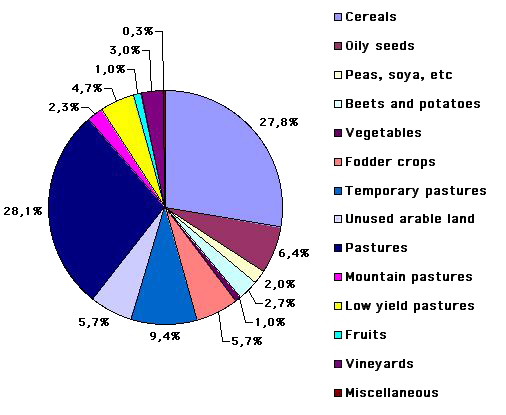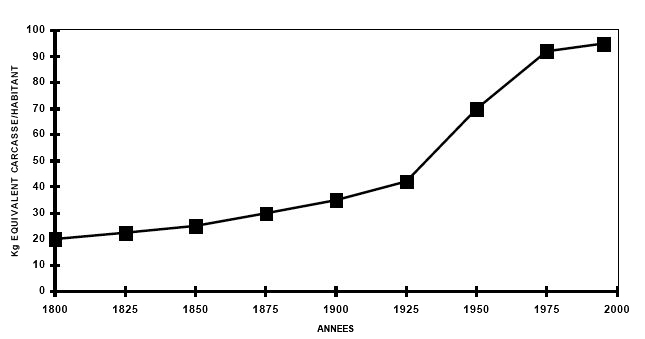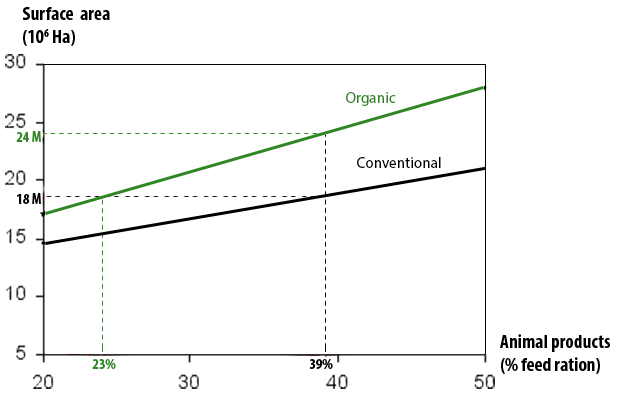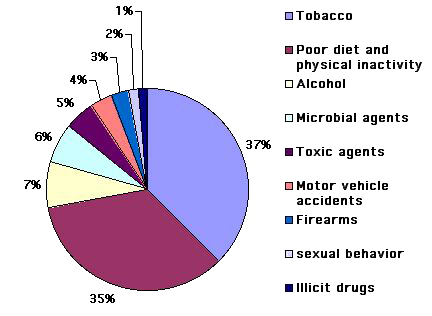There already exists a large proportion of the inhabitants of the planet that eat organic : all the “underdevelopped” countries that can’t afford synthetic fertilizers and pesticides ! And we must remember that here in France non-organic farming is not that ancient : it is only a couple of decades old, because before the Second World War we had neither synthetic fertilizers nor pesticides.
Before proceeding, I must recall that organic farming will not mean, here, agricultural practices that comply with a particular norm, but agricultural practices that exclude :
- synthetic fertilizers,
- synthetic pesticides, but we must remember that “natural” pesticides exist, that might be compatible with the organic practices, and still be aggressive for the environment (such as copper sulfate).
For occidental countries, the question in the title is equivalent to the following : as organic farming has lower outputs per surface unit than conventional farming, do we have enough arable land to grow everything organic while keeping the same eating habits ?
Economic matters are voluntarily set aside for the time being. A little discussion is offered as a conclusion, below.
If we take a close look at the breakdown of agricultural surfaces in France, we get quickly to the conclusion that the previous question (on the availability of land) is actually almost equivalent to the following : how much meat do we want to eat, regardless of tis quality ?

Breakdown by type of crop of the agricultural surfaces in France in 1995 (excluding overseas).
Various sources.
More than half the agricultural land is directly or indirectly used for feeding animals, and especially cattle (about 3/4th of the total) :
- a large half of cereals, using a small 15% of the surface,
- a large fraction of oily seeds, peas, and beets and potatoes (this lot representing 11% of agricultural land)
- all fodder crops, of course, that is 6% of agricultural land
- all temprary and permanent pastures (fertilizers are generally spread on them, what not many people know !), mountain and low yield pastures (this lot representing 44% of agricultural land).
Between 65 and 70% of the available agricultural land in France is thus devoted to feeding animals. One can also notice that fruits and vegetables (except for potatoes and vineyards) acount for only 2% of the total.
A main reason to call on intensive cultural practices is therefore our wish to eat a lot of meat produced at a low price. The abundance of dairy products (including ice creams, cakes, etc) is partially linked to the level of meat production, of course.
It is impressing to notice that the amount of meat consumed per person and per year has increased threefold in France in a century (from 30 to 100 kg per person and per year).

Meat consumption per person and per year for France, from 1800 to 2000.
The burst of the meat consumption happens just after the Second World War, when “synthetic” fertilizers and pesticides started spreading, showing that an important meat consumption and an intensive oil dependant agriculture are strongly coupled for the time being.
Source : Bernard Sauvant, INRA.
A similar evolution is observed for the average meat consumption on the planet, as the annual weight eaten by an inhabitant of the Earth has increased by 60% over the last 40 years (while the world population doubled, which means that the meat production has been multiplied by 3,2).

Annual meat consumption by inhabitant of planet Earth, from 1961 to 1998.
Source : FAO, quoted by World Resource Institute
As soon as we accept to eat less meat, it becomes possible to have organic farming for everyone, a 50% decrease of the outputs by land unit being perfectly acceptable (in the Beauce, which is the grain producing region of France, the yield of organic farming is a little above 4 tonnes of wheat per hectare when the yield of conventionnal agriculture is about 8 tonnes per hectare).
We would not need GMO in the short term either, or at least not to resist pesticides : today, the main justification of GMOs is to be able to maintain an intensive agriculture while tempting to minimize one of its inconvenients (large pesticide use). Well, if we ate less meat, we would not need as intensive an agriculture, and hence we would not need all that is required to maintain it.
This does not mean that GMOs are useless, everywhere and all the time, but it just means that doing without in the short term gives us some time to carefully examine which ones we want and which ones we do not want, without loosing the ability to refuse part of them if the inconvenients seem to be excessive given the advantages.
Eating would not cost more, but for the same price – and the same arable land – the share of animal-derived products would decrease, particularly for all that comes from cattle, by one third to one half (see graph below).

Agricultural land required to feed the german population, in million hectares, depending on the share of animal products in the food production.
The green curve corresponds to organic farming, and the black curve to a “regular” agriculture.
18 million hectares are enough to enable a 39% share of animal products in the total with “conventional” agriculture, but 24 million hectares are required (for the same share of animal products in the average serving) if we convert all agriculture to organic farming.
The other way round, if the agricultural land is limited to 18 million hectares, converting all agriculture to organic leads to a decrease of the share of animal products in the diet from 39% to 23%, that is a decrease of more than 40%.
Source : Seemueller, 2000, cité par Lotter, 2003 – Journal of Sustainable Agriculture
In short, having everyone eat organic is possible and would mean :
- eating less meat and animal products, particularly all that comes from cattle,
- eating proportionnally more cereals, fruits and vegetables, fish and poultry,
- a lower pressure on the environment : no more synthetic pesticides and fertilizers,
- probably a similar budget devoted to food, but for less meat in the serving.
What about the economic aspects ? Is such a conversion a cost globally speaking ?
The fact is that organic farming increases the direct costs per production unit, but in the same time it avoids nuisances which are costy to repair :
- conventional farming is a main source of water pollution, and avoiding that pollution allows obviously to avoid the depollution costs (what would not be good news fot water treatment companies, or for mineral water companies, but might be considered so for the end-user, particularly in Bretagne !),
- massive use of pesticides and fertilizers generates nuisances for ecosystems (climate change, loss of biodiversity, including in the surrounding freshwaters or in seawater, eutrophization of the seawter near the shore, etc), that will generate future costs that might prove higher than the marginal profit generated today (eating more meat).
And at last it seems that organic farming has a higher “job content” than conventional agriculture, for an equivalent amount of sales. If this turns out to be true, while paying more for food, we would pay less for unemployement !
It is therefore not certain at all that the strictly economic balance is against converting agriculture to organic farming if we take a close look (I don’t know wheteher someone did it seriously) and take into account all elements, present and to come. And at last we should note that for agriculture as for many other items, once we have crossed the threshold where everybody has enough to eat, which is the case everywhere in “rich countries” (and even the case almost everywhere in the world, the recent famines being more the result of wars – as in Somalia – or political oppression – North Korea being a good example – than the result of insufficient food production), the choice of quality and “sustainability” is no less “logical” than the choice of quantitative growth.
Let’s imagine a friend from Mars – there might be one, hidden where our probes haven’t been yet ! – that we would try to persuade of the need to maintain the quantitative production in a world – the occidental one – where eating contributes to one third of the greenhouse gases emissions, and where the same eating is about to become the first cause of avoidable deaths.

Avoidable causes of deaths in the US in 2000.
“Poor diet and physical inactivity” should be understood as : “we eat too much for the exercise we have”. Another option is of course to maintain food consumption at the present level but dump cars and tractors and walk and plough instead : to solve the climate problem, it works just the same !
To persuade our martian friend, what elements “logical seen from Mars” could we invent ?